Great all-rounder for river trout, especially effective under bankside trees in summer.
Fish this fly on rivers where trees and bushes overhang the water; all sorts of beetles and bugs will lose their footing and provide easy pickings.
Materials for the Foam Beetle
Hook: Size 10-16 wide gape Thread: Black Body: Peacock Glister Back: Black closed-cell foam Legs: Black fine rubber legs Head: Black closed-cell foam Wing post: Fluorescent pink Tiemco Aero Dry Wing
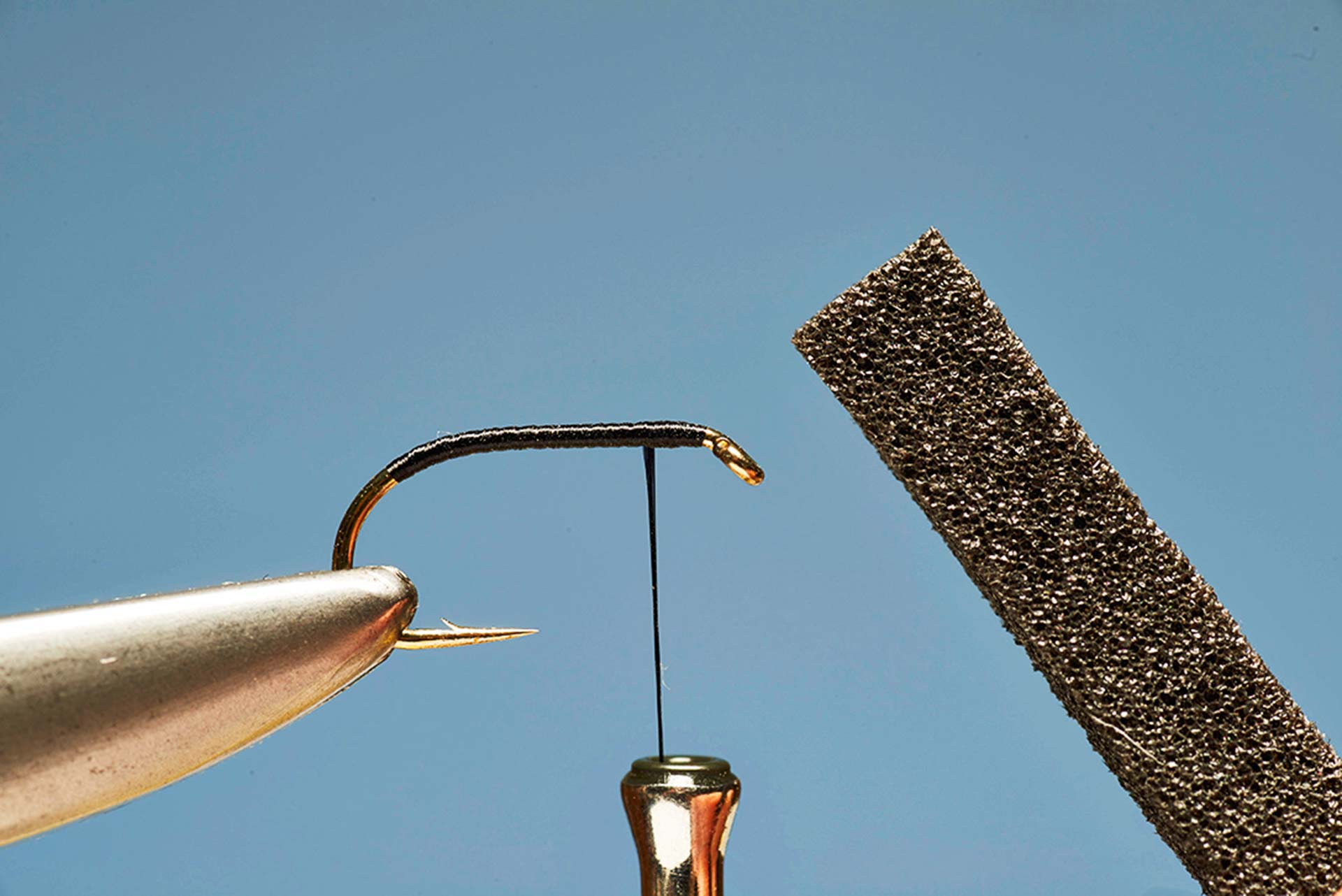 Step 1. Fix the hook in the vice and apply a bed of tying thread. Take a piece of black closed-cell foam and cut a strip about 5mm wide.
Step 1. Fix the hook in the vice and apply a bed of tying thread. Take a piece of black closed-cell foam and cut a strip about 5mm wide.
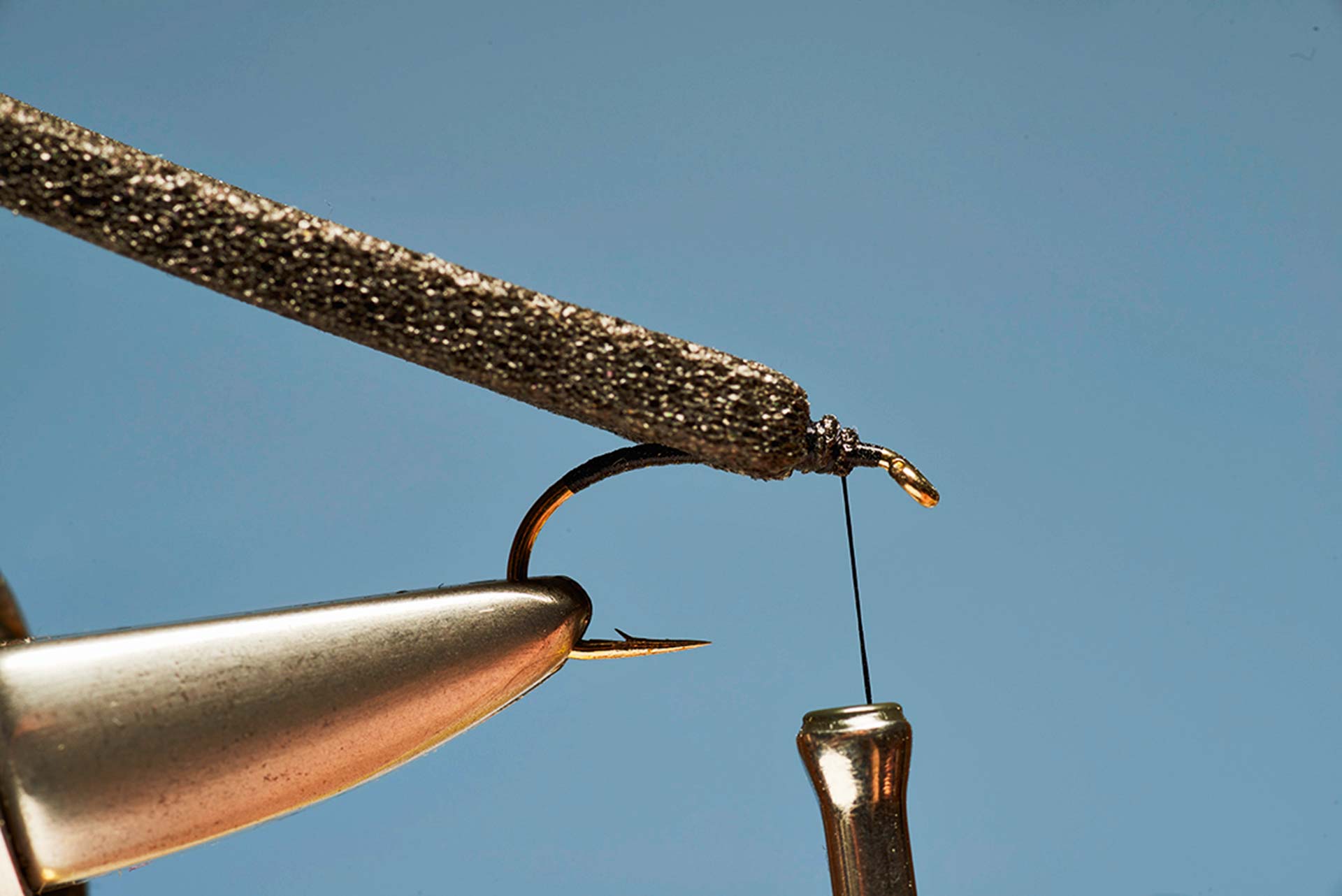 Step 2. Offer the foam up to the hook and catch it in place a short distance from the eye. Secure the end of the foam with tight thread turns.
Step 2. Offer the foam up to the hook and catch it in place a short distance from the eye. Secure the end of the foam with tight thread turns.
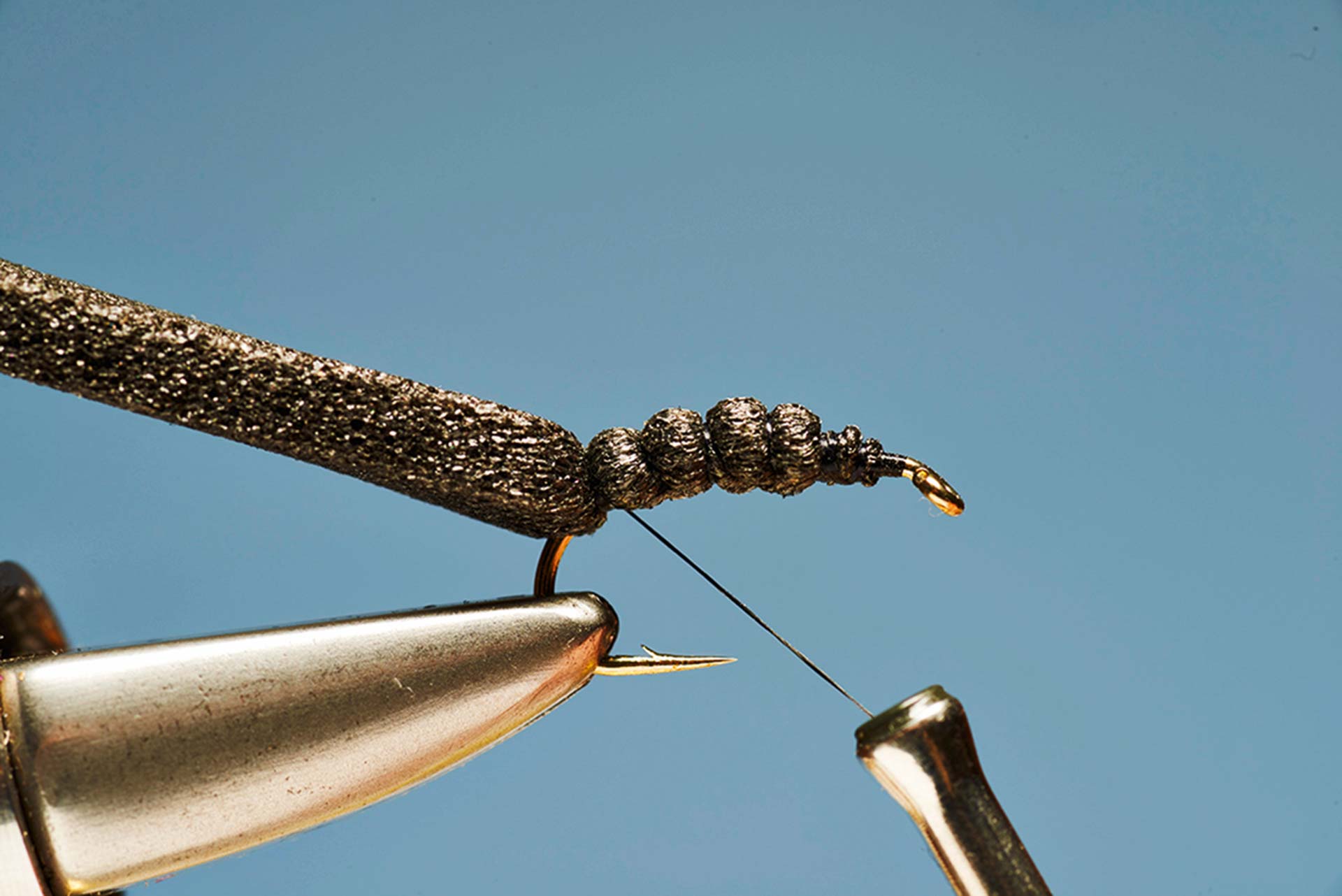 Step 3. Wind the thread down towards the bend. Apply open turns of thread over the foam so it is held in place but not crushed so much as to lose buoyancy.
Step 3. Wind the thread down towards the bend. Apply open turns of thread over the foam so it is held in place but not crushed so much as to lose buoyancy.
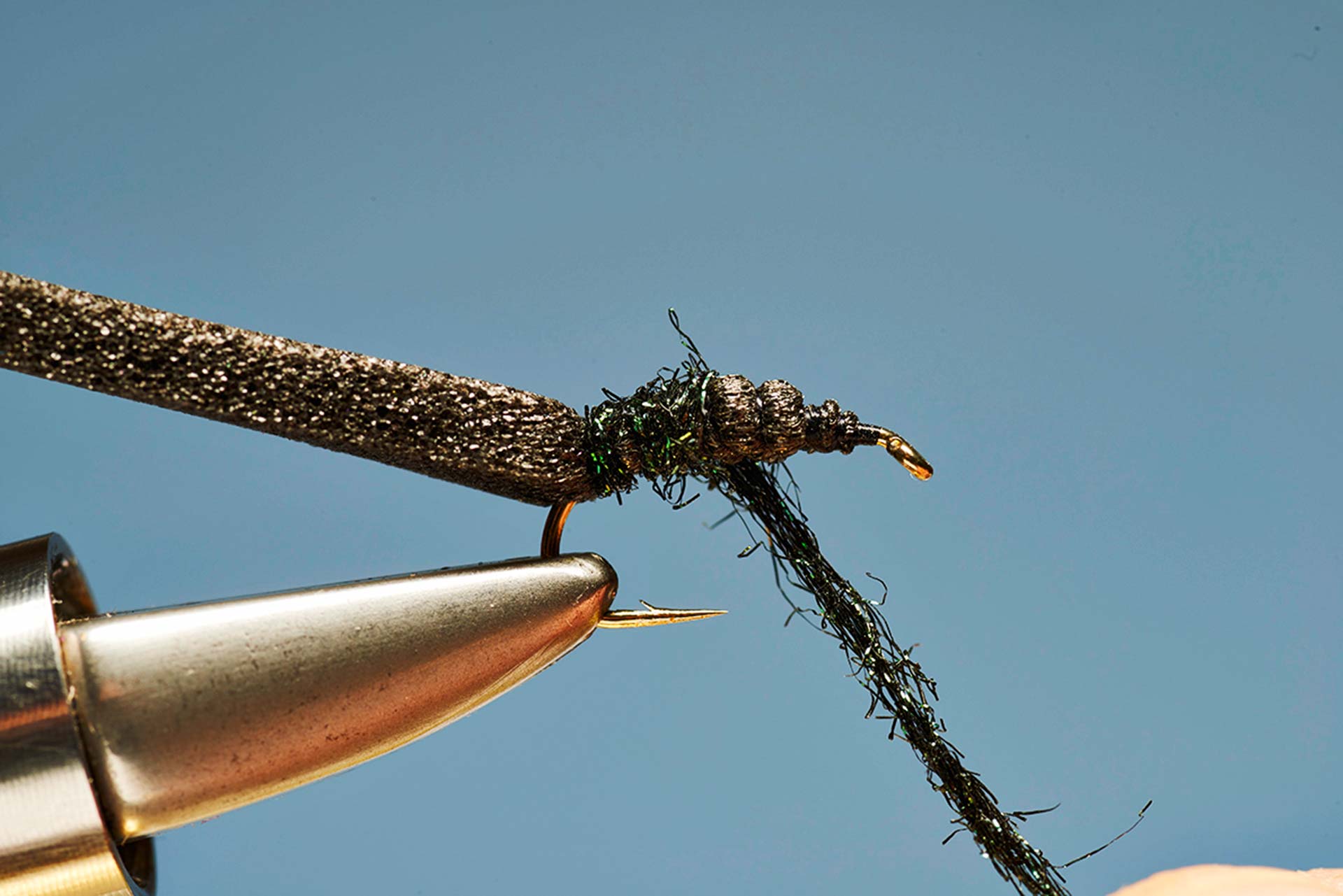 Step 4. Once the bend has been reached, add tight thread turns to lock the foam end in place. Apply turns of dubbed Glister over the foam.
Step 4. Once the bend has been reached, add tight thread turns to lock the foam end in place. Apply turns of dubbed Glister over the foam.
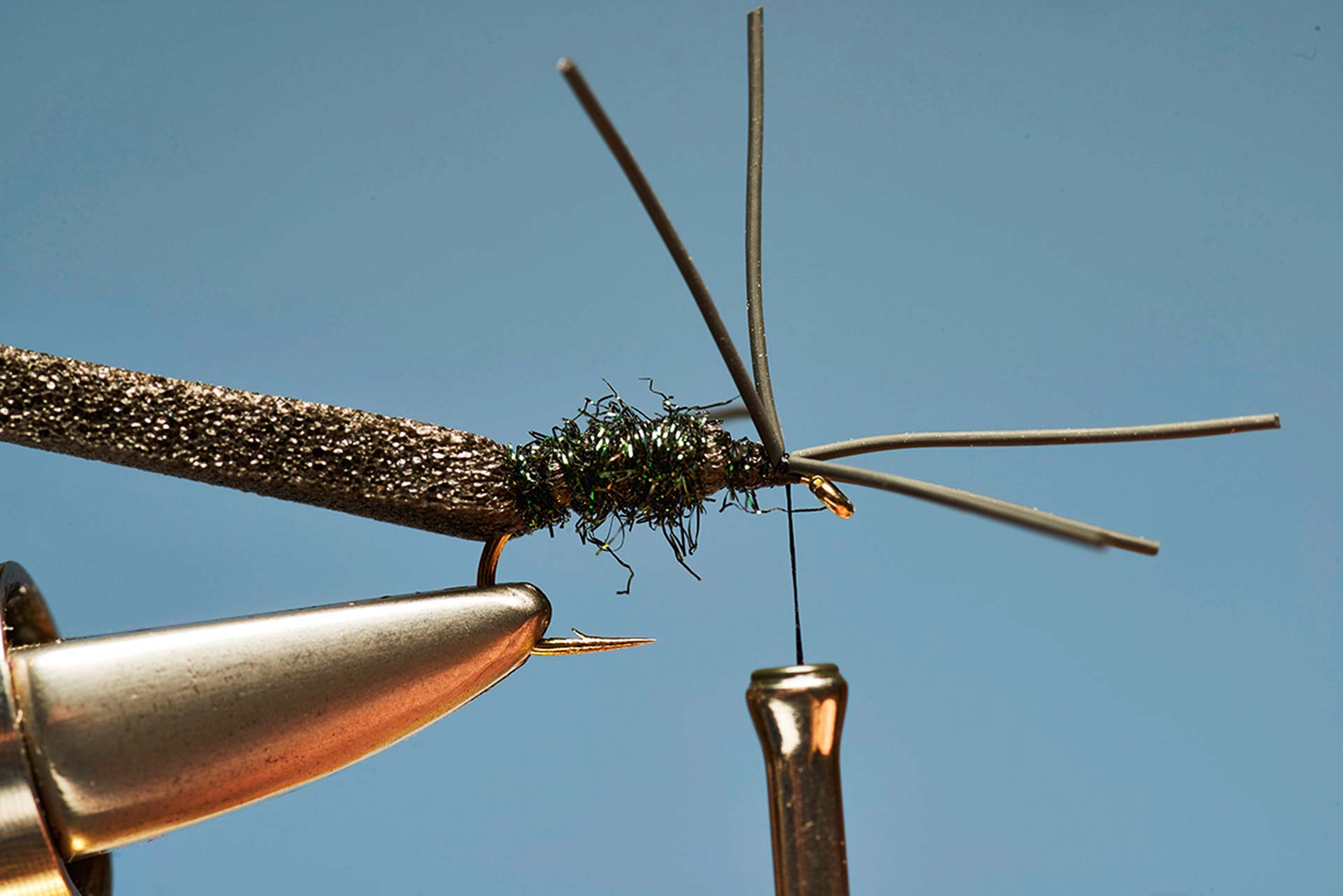 Step 5, Once the Glister has covered the entire length of the foam underbody catch in three fine rubber strands by their midpoint.
Step 5, Once the Glister has covered the entire length of the foam underbody catch in three fine rubber strands by their midpoint.
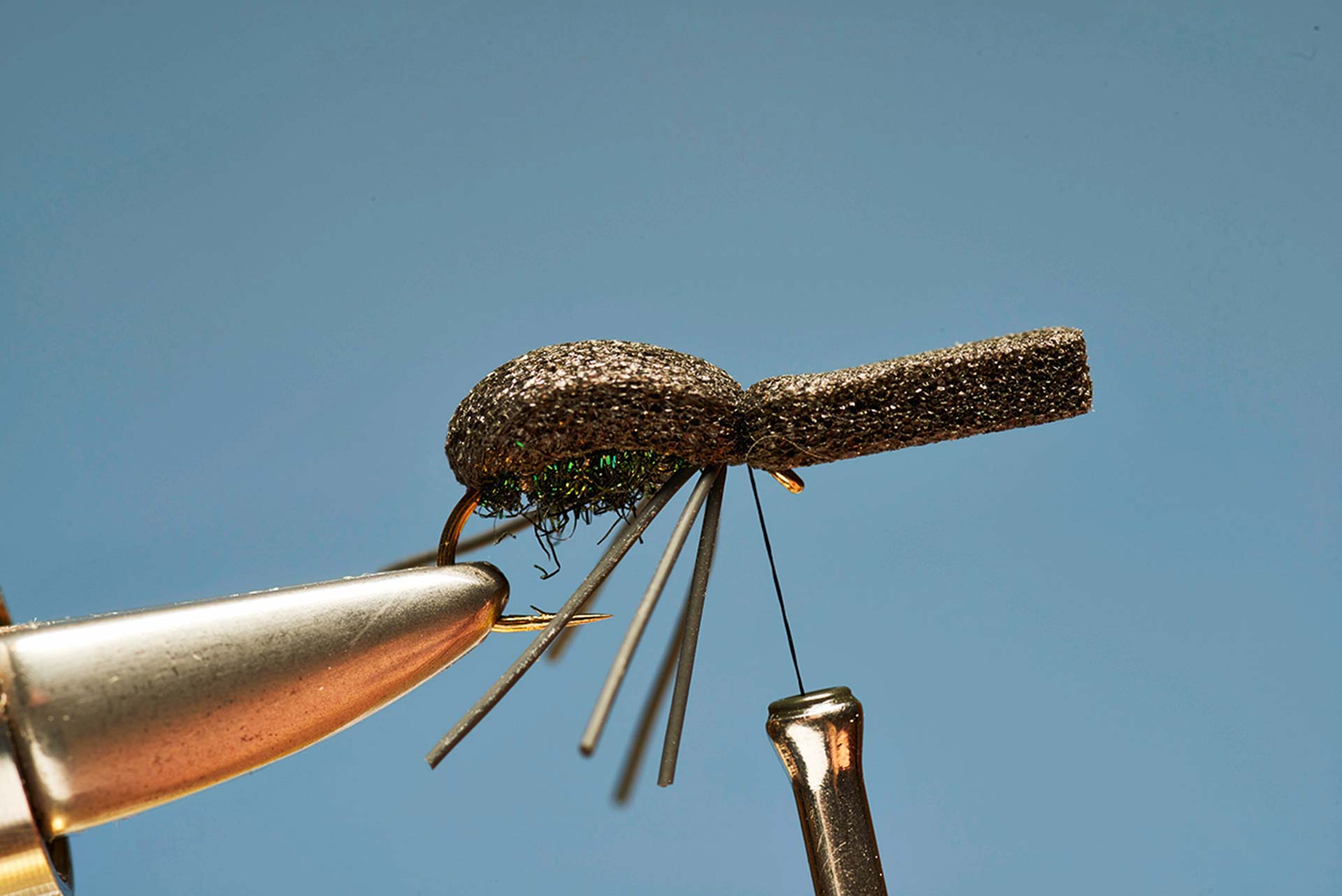 Step 6. Secure the strands in place to form six legs, three either side, then draw the foam over the top of the body. Secure at the eye with thread.
Step 6. Secure the strands in place to form six legs, three either side, then draw the foam over the top of the body. Secure at the eye with thread.
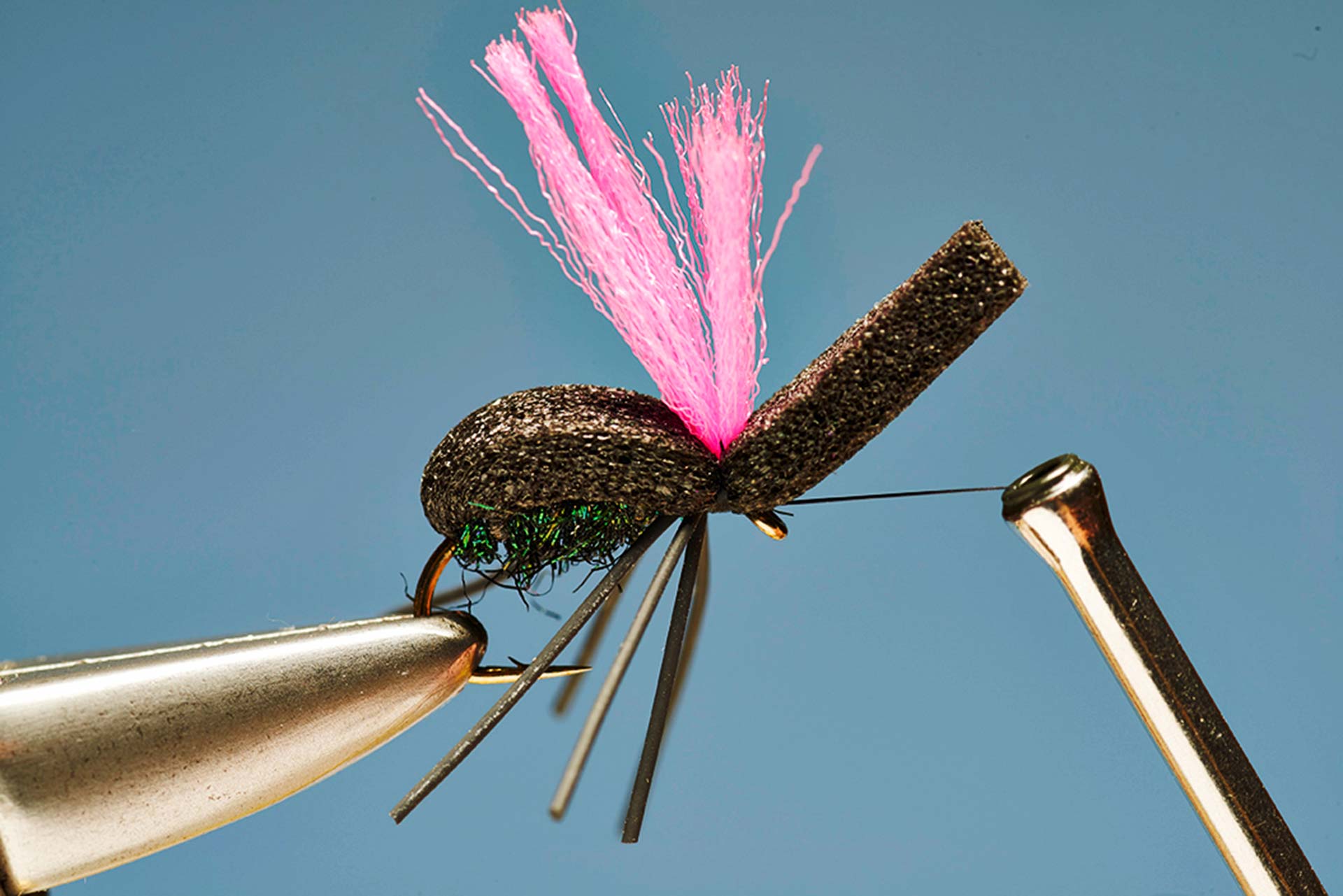 Step 7. Take a length of pink Aero Dry Wing and select one thin strand. Catch the yarn in place so that it sits between the body and the head.
Step 7. Take a length of pink Aero Dry Wing and select one thin strand. Catch the yarn in place so that it sits between the body and the head.
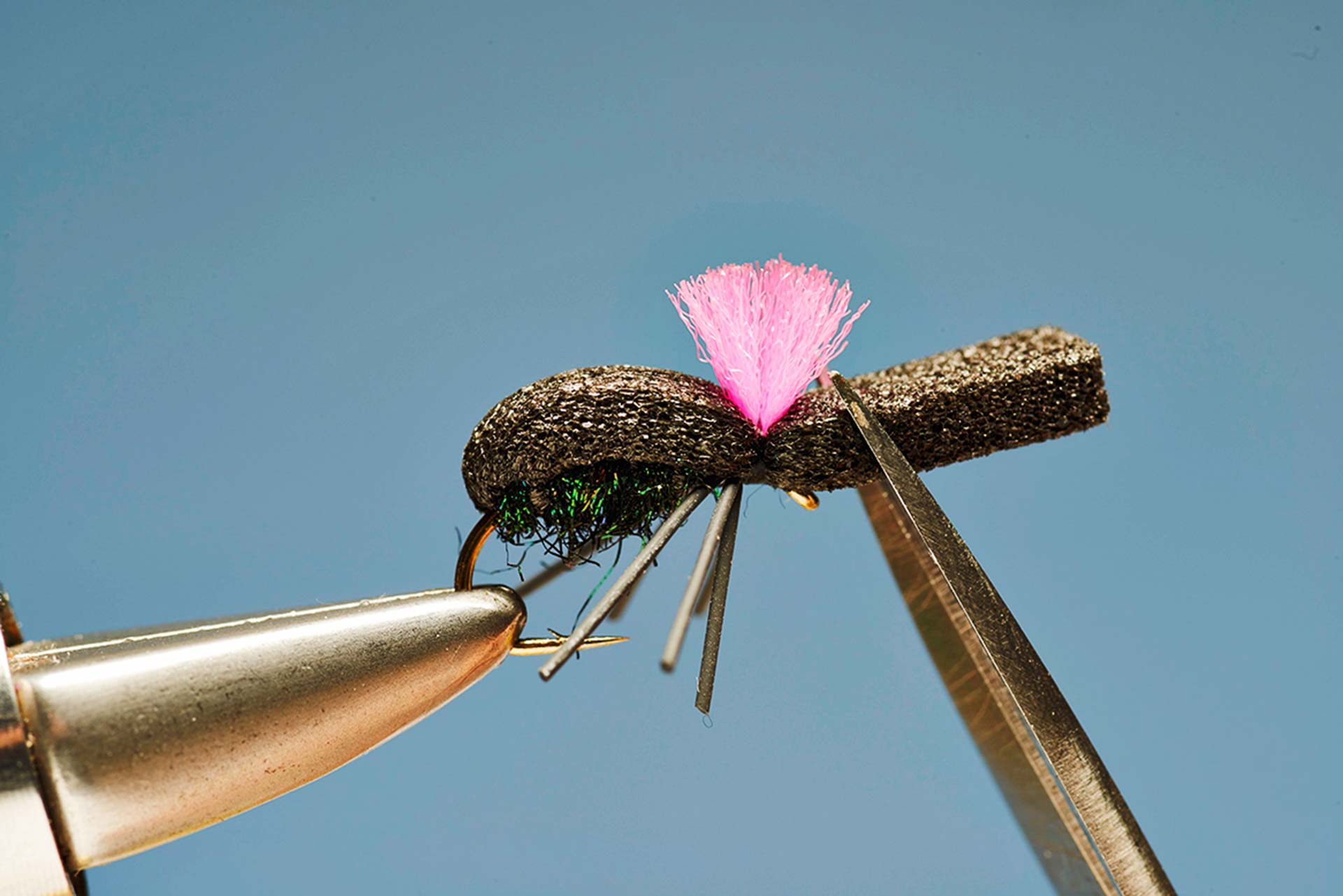 Step 8. Wind the tying thread under the remainder of the foam up to the eye, then cast it off with a whip finish. Trim the legs and foam, then trim the end of the yarn to form the wing post.
Step 8. Wind the tying thread under the remainder of the foam up to the eye, then cast it off with a whip finish. Trim the legs and foam, then trim the end of the yarn to form the wing post.
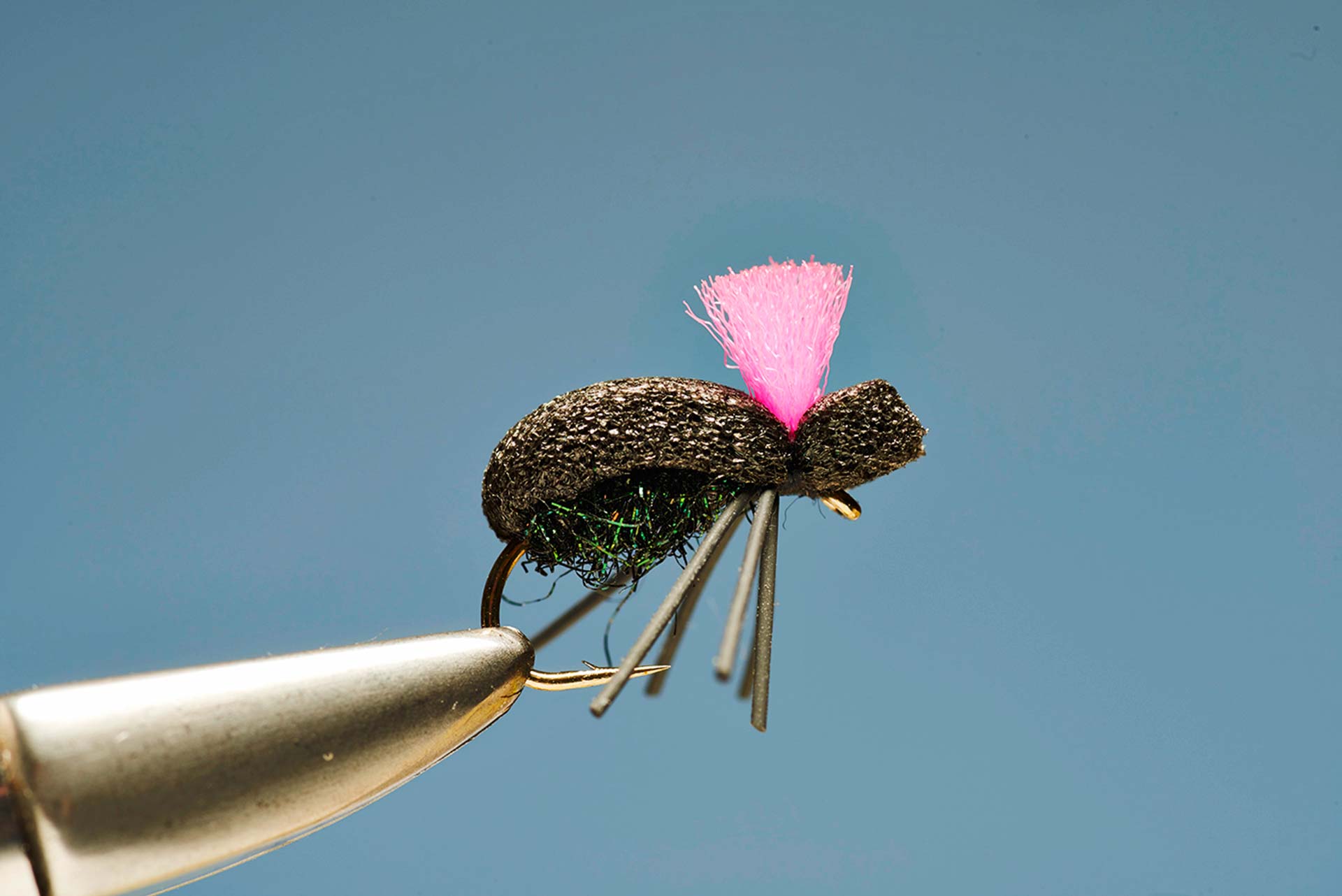 Step 9. Apply a drop of clear varnish to the bare thread turns at the wing base.
Step 9. Apply a drop of clear varnish to the bare thread turns at the wing base.
Discover the latest flies tied by the UK’s best fly-fishers every month in Trout & Salmon. Subscribe or buy single issues here